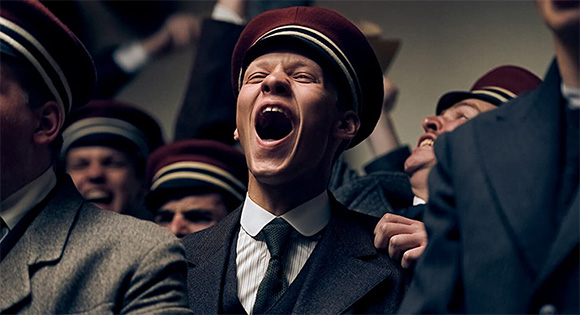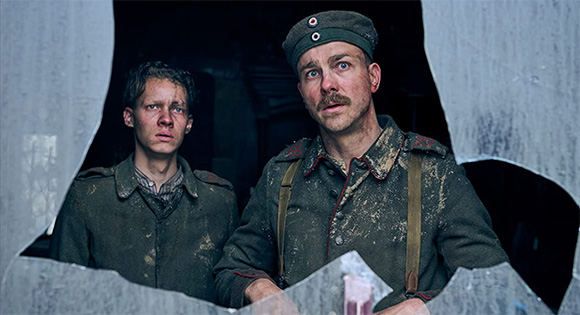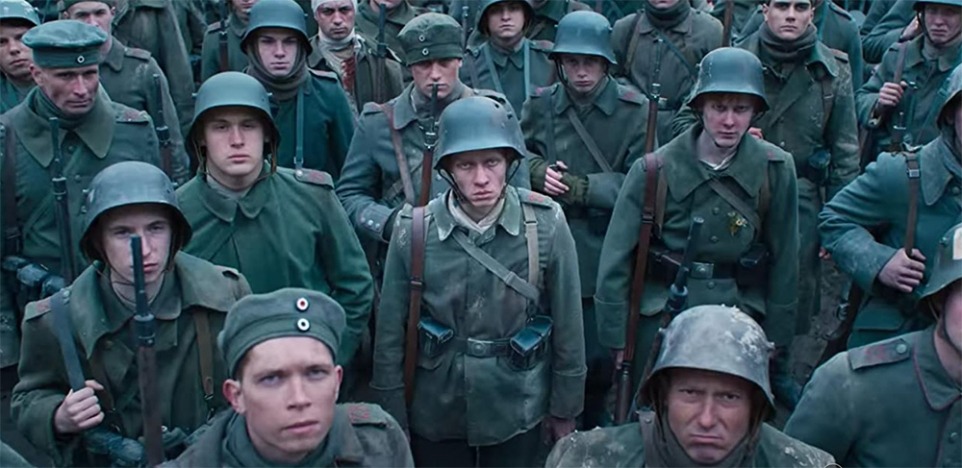“War is always reactionary, a drama in which two or more parties, who feel themselves powerless to do anything except respond to the aggressive initiative of the other, seek to demonstrate their superior potency.”
— Sam Keen in Faces of the Enemy
In the opening scene of Edward Berger’s new German-language version of Erich Maria Remarque’s 1929 novel, we look down upon a landscape pocked by death and destruction. The mountains, woods, and animals have all been violated by war. Through the smoke of an aerial view, we see that the ground is littered with corpses. These are the bodies of young soldiers who fought in the German army on the French front after being stirred by patriotic speeches from their military leaders.

Paul Baumer (Felix Kammerer) and his friends go into battle filled with passion and convinced of eventual victory. But they are soon shocked at the ferocity of the war and the grim carnage around them. Those who cave into fear are humiliated. Edward Berger, the director, uses a repetitive three-note rife by Volker Bertelmann to get across the strident noise of tanks, hand-grenades, machine guns, and the screams of wounded and dying men.

Some three million young men died on the Western front. While Paul struggles to stay alive, to look after his comrades, and to find shelter, food, and water. Matthias Erzberger (Daniel Bruhl), head of Germany’s armistice commission, and Marshal Ferdinand Foch of France (Thibault de Montalembert) slowly work on cease-fire talks. By the time it was over, eight million people had died in World War I. It was monumentally shattering event which transformed the style of combat more than any prior war. This version of All Quiet on the Western Front gives viewers many incisive and meaningful opportunities to reflect on the grotesque face of war itself and everything that can lead up to it.
